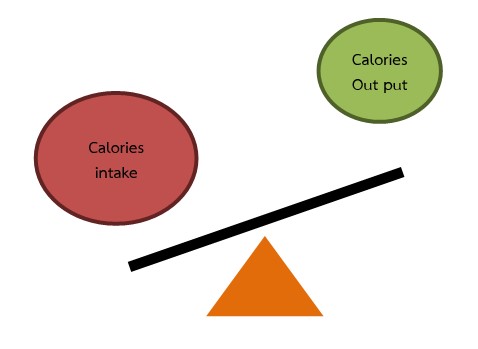Choosing natural foods for weight control
Keywords:
Overweight, Obesity, Weight loss, Dietary extractionAbstract
At the present, the behavioral of people change leads to increase in overweight, which is caused by from energy imbalance. However, the weight maintenance is difficult to control and change behavior. It will be required a process or method to approach for changing behavior in many ways. Then, the people are failed to reduce or control theirs weight. Therefore, the beauty and food industry has been developed various supplements for using in weight control or weight loss that made from natural extracts. However, the weight could be controlled by not only to select the healthy foods and supplements but also change the behavioral to energy balance is important to do as well. Then, the purpose of this review is a collection the data of natural supplement from plants, vegetables and fruits that contain important substances in helping to lose weight such as green tea extract, chilly, etc. Moreover, this review concluded the current methods and applied of behavioral theory the stage of change to apply it to change the behavior in weight loss for success in the future.
Downloads
References
Engin A. The Definition and Prevalence of Obesity and Metabolic Syndrome. Adv Exp Med Biol. 2017;960:1-17. https://doi.org/10.1007/978-3-319-48382-5_1
Prochaska JO, DiClemente CC, Norcross JC. In search of how people change. Applications to addictive behaviors. Am Psychol. 1992;47(9):1102-1114. https://doi.org/10.1037//0003-066x.47.9.1102
Johnson SS, Paiva AL, Cummins CO, et al. Transtheoretical model-based multiple behavior intervention for weight management: effectiveness on a population basis. Prev Med. 2008;46(3):238-246. https://doi.org/10.1016/j.ypmed.2007.09.010
Mastellos N, Gunn LH, Felix LM, Car J, Majeed A. Transtheoretical model stages of change for dietary and physical exercise modification in weight loss management for overweight and obese adults. Cochrane Database Syst Rev. 2014;(2):CD008066. https://doi.org/10.1002/14651858.CD008066.pub3
Karintrakul S, Angkatavanich J. A randomized controlled trial of an individualized nutrition counseling program matched with a transtheoretical model for overweight and obese females in Thailand. Nutr Res Pract. 2017;11(4):319-326. https://doi.org/10.4162/nrp.2017.11.4.319
Hall KD, Heymsfield SB, Kemnitz JW, Klein S, Schoeller DA, Speakman JR. Energy balance and its components: implications for body weight regulation123. Am J Clin Nutr. 2012;95(4):989-994. https://doi.org/10.3945/ajcn.112.036350
Furusaka S, Tochigi K, Yamazaki K, Naganuma T, Inagaki A, Koike S. Estimating the seasonal energy balance in Asian black bears and associated factors. Ecosphere. 2019;10(10):e02891. https://doi.org/10.1002/ecs2.2891
Jensen MD, Ryan DH, Apovian CM, et al. 2013 AHA/ACC/TOS guideline for the management of overweight and obesity in adults: a report of the American College of Cardiology/American Heart Association Task Force on Practice Guidelines and The Obesity Society. Circulation. 2014;129(25 Suppl 2):S102-138. https://doi.org/10.1161/01.cir.0000437739.71477.ee
Paoli A, Rubini A, Volek JS, Grimaldi KA. Beyond weight loss: a review of the therapeutic uses of very-low-carbohydrate (ketogenic) diets. Eur J Clin Nutr. 2013;67(8):789-796. https://doi.org/10.1038/ejcn.2013.116
Moreno B, Bellido D, Sajoux I, et al. Comparison of a very low-calorie-ketogenic diet with a standard low-calorie diet in the treatment of obesity. Endocrine. 2014;47(3):793-805. https://doi.org/10.1007/s12020-014-0192-3
Merra G, Miranda R, Barrucco S, et al. Very-low-calorie ketogenic diet with aminoacid supplement versus very low restricted-calorie diet for preserving muscle mass during weight loss: a pilot double-blind study. Eur Rev Med Pharmacol Sci. 2016;20(12):2613-2621.
Papathanasopoulos A, Camilleri M. Dietary fiber supplements: effects in obesity and metabolic syndrome and relationship to gastrointestinal functions. Gastroenterology. 2010;138(1):65-72.e1-2. https://doi.org/10.1053/j.gastro.2009.11.045
Sakata T. A very-low-calorie conventional Japanese diet: its implications for prevention of obesity. Obes Res. 1995;3 Suppl 2:233s-239s. https://doi.org/10.1002/j.1550-8528.1995.tb00469.x
Miketinas DC, Bray GA, Beyl RA, Ryan DH, Sacks FM, Champagne CM. Fiber Intake Predicts Weight Loss and Dietary Adherence in Adults Consuming Calorie-Restricted Diets: The POUNDS Lost (Preventing Overweight Using Novel Dietary Strategies) Study. J Nutr. 2019;149(10):1742-1748. https://doi.org/10.1093/jn/nxz117
Howarth NC, Saltzman E, Roberts SB. Dietary fiber and weight regulation. Nutr Rev. 2001;59(5):129-139. https://doi.org/10.1111/j.1753-4887.2001.tb07001.x
Prior RL. Anthocyanins and weight loss. CAB Rev Perspect Agric Vet Sci Nutr Nat Resour. 2010;5(029). https://doi.org/10.1079/PAVSNNR20105029
Lehtonen H-M, Suomela J-P, Tahvonen R, et al. Different berries and berry fractions have various but slightly positive effects on the associated variables of metabolic diseases on overweight and obese women. Eur J Clin Nutr. 2011;65(3):394-401. https://doi.org/10.1038/ejcn.2010.268
Stull AJ, Cash KC, Johnson WD, Champagne CM, Cefalu WT. Bioactives in Blueberries Improve Insulin Sensitivity in Obese, Insulin-Resistant Men and Women1234. J Nutr. 2010;140(10):1764-1768. https://doi.org/10.3945/jn.110.125336
Lehtonen H-M, Suomela J-P, Tahvonen R, et al. Berry meals and risk factors associated with metabolic syndrome. Eur J Clin Nutr. 2010;64(6):614-621. https://doi.org/10.1038/ejcn.2010.27
Nilsson A, Salo I, Plaza M, Björck I. Effects of a mixed berry beverage on cognitive functions and cardiometabolic risk markers; A randomized cross-over study in healthy older adults. PloS One. 2017;12(11):e0188173. https://doi.org/10.1371/journal.pone.0188173
Khoo HE, Azlan A, Tang ST, Lim SM. Anthocyanidins and anthocyanins: colored pigments as food, pharmaceutical ingredients, and the potential health benefits. Food Nutr Res. 2017;61(1):1361779. https://doi.org/10.1080/16546628.2017.1361779
Han LK, Takaku T, Li J, Kimura Y, Okuda H. Anti-obesity action of oolong tea. Int J Obes Relat Metab Disord J Int Assoc Study Obes. 1999;23(1):98-105. https://doi.org/10.1038/sj.ijo.0800766

Downloads
Published
How to Cite
Issue
Section
License
Copyright and Disclaimer
Articles published in this journal are the copyright of Chulabhorn Royal Academy.
The opinions expressed in each article are those of the individual authors and do not necessarily reflect the views of Chulabhorn Royal Academy or any other faculty members of the Academy. The authors are fully responsible for all content in their respective articles. In the event of any errors or inaccuracies, the responsibility lies solely with the individual authors.


